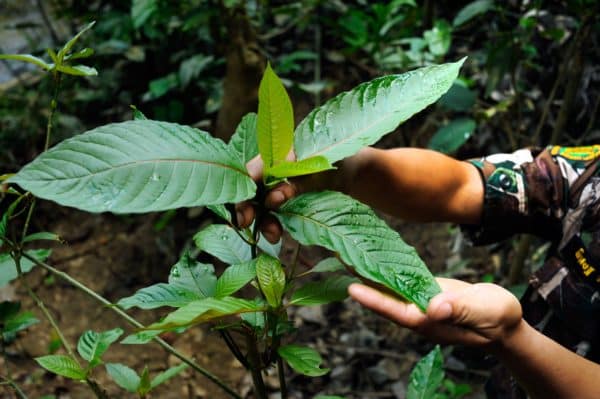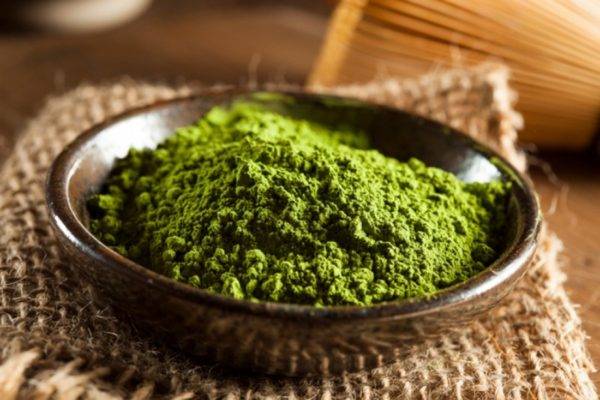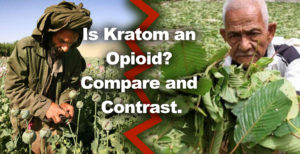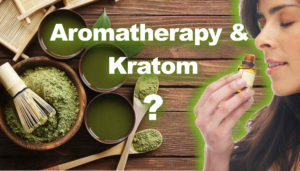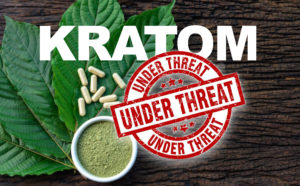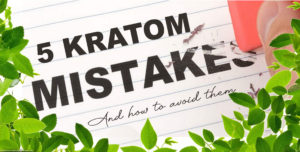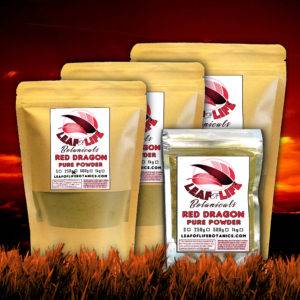Kratom is being talked about all over. But some wrong ideas have come up. Here are 5 common myths about kratom – and we debunk them.
MYTH #1 = Kratom is a weird synthetic designer drug.
TRUTH = Kratom is a natural herbal substance in the coffee family. Leaves are dried and crushed into powder. Nothing synthetic or designer about it.
When science tries to improve upon nature, it often backfires. Kratom is all natural. There are extracts and resins available, but kratom itself is just a plant that grows in Southeast Asia.
Now, kratom alkaloids that produce its pleasing effects could be synthesized in a lab. Big Pharma would love to lobby to make kratom illegal, while they own the patent on synthetic kratom chemicals that they can use to make new medicines to sell.
But kratom is technically not a drug per se, it should be thought of as more of a supplement. You can’t really party on it like a recreational drug. Kratom is a serious, beneficial substance that is used for specific reasons. Kratom is like peppermint, cinnamon, chamomile, turmeric, and other natural substances. It should never be grouped together with dangerous designer drugs or highly abused street dope.
However, when kratom began to be more widely used in America, the “fake marihuana”, “bath salts”, and “designer drugs” craze was in full swing. Sometimes, gas stations and head shops would sell kratom products right next to these dangerous, “get high” substances, thus causing people to lump kratom in with the more dubious products.

MYTH #2 = Kratom is very addictive and withdrawal symptoms are severe.
TRUTH = Kratom is very different from Big Pharma opioids and benzos. While practically anything from coffee to candy can become habitual and lead to chemical dependency, kratom is not a very addictive substance. Users report taking it for years, then stopping with very few problems.
A major difference between kratom and narcotics is that with kratom, your dose amount and frequency tend to remain stable for years, never increasing.
So, while you may get used to having kratom in your system, you don’t need to keep escalating the dose amount or frequency, trying to achieve some sort of “high” that you got in the early days of your usage. You determine an ideal dose and stick to it for years, with no sneaking around, stealing and scheming to support an ever-increasingly larger and more expensive supply.
Kratom use is similar to coffee. Some people like drinking one cup of coffee in the morning to get going, others may desire two or three cups to wake up. But once an amount is found to be perfect for their needs, coffee drinkers don’t keep drinking more and more, chasing the caffeine dragon of supreme chemical kicks. A certain number of cups is what they tend to drink every day and are perfectly satisfied.
In fact, with kratom, “less is more”. The lowest possible dose is most effective. Increasing the dose soon leads to diminishing returns or the opposite effect from what was sought.
Kratom has no real withdrawal symptoms like heroin or other narcotics. Kratom is not a narcotic, though it does bind with the body’s opioid receptors. But kratom use is extremely different from the behavior of so-called “junkies”, drug experimenters, and mainliners.
Kratom does not cause violent physical reactions when users quit taking it.
At most, the body might feel a bit strange and out of whack, with the user becoming slightly irritable at being suddenly deprived of its familiar kratom cushion. You might have a slight headache for a while. But this mildly unpleasant condition evaporates quickly. Within a few days, the kratom user who quits kratom is back to dealing with pain or other symptoms in a different manner, perhaps by switching to cannabis.
MYTH #3 = Kratom users are still addicts and drug fiends, they just switched to a different high.
TRUTH = That’s absurd. It’s like saying a person who now drinks coffee instead of whiskey has made no progress and is still a depraved, out of control “liquid addict” or a “beverage fiend”.
No, kratom is not a “high” type drug that drug fiends love to abuse.
No, kratom users, in their attitudes and lifestyles, are absolutely nothing like the users of hard drugs like crystal meth, PCP, heroin, crack, krokodil, or Fentanyl.
No, kratom users are not still shackled to a dangerous drug that’s just a bit different from other street dope. Kratom users take advantage of the many benefits that kratom provides people with certain health issues.
No, kratom users are NOT “still addicts”. Nor or are they, as doctors call it, “exhibiting drug seeking behavior” by using kratom.
Kratom users are living normal lives, being good moms, good dads, good employees. Kratom users figure out an exact amount of kratom to use, the best time or times to take it, then they stick to the routine, without increasing the dosing, for as long as they need to use it.
And when a person is on kratom, they tend to be more focused, more sociable, and more enthusiastic, resulting in bouts of talkativeness and cheerful laughter. There is no freaky craving, disruptive personality changes, or desperate “need another fix” type actions involved in a kratom user’s life.
Kratom does not give any sort of druggy feeling to anybody. Kratom can be calming, or motivating, or cause pain to subside – but kratom is not a thrill seeker’s dream. If you seek to abuse kratom just to have fun with a wild feeling – you’re going to be horribly disappointed. Kratom solves some problems, it doesn’t contribute to mischief, misbehavior or socially misappropriate conduct.

MYTH #4 = People are overdosing on kratom, resulting in death.
TRUTH = They’d vomit first. It’s nearly impossible to overdose on kratom.
Why? Several things.
Kratom is very bitter – and thus, hard to swallow, even for veteran users. Taking too much kratom would be like trying to overdose on dandelion juice or cinnamon. There’s only so much your system can handle, and then, once you cross the threshold of endurance, your body is going to react dramatically to overloading it with too much kratom. In other words, you’ll puke it up.
Kratom does not give a bigger and stronger “high” if you keep taking more and more of it, to the point of deliberate abuse. After a certain point, a person trying to overdose or get super “high” on kratom will become sedated and will probably lie down and take a brief nap. Overdosing on kratom is unheard of, because it would be such hard work.
When you hear about people dying with kratom in their systems, the case is always that kratom alone did not kill anybody. The death happened due to mixing kratom with dangerous drugs like street dope, Fentanyl, Oxycontin, Xanax, Adderall, Zoloft, alcohol, and other substances. You never see any news reports about individuals taking kratom alone, then dying from it.
Besides, a toxically lethal level of kratom would be difficult to consume, due to how bitter it is, and how the body will vomit excessive kratom out.
Of course, it’s always risky to mix any drugs together or take them at roughly the same time, during the course of one day. Alcohol is particularly dangerous when combined with narcotic pills or speedy powders.
One must never take kratom along with any other medicines, if possible. Now, some people have to take diabetic medicine or other things, at the same time they’re taking kratom for what ails them. There has not been a lot of scientific research yet on kratom, especially on such topics of mixing kratom with opioids, benzos, designer street drugs, or alcohol.
It’s odd to even think of anyone taking opioids along with kratom. It seems like they would conflict and perhaps cancel each other out. Or be too much pain medicine for one person to take. But in reality, people who use kratom tend to never need or desire opioids, alcohol, or benzos. Kratom solves their problems and has greatly decreased their interest in other drugs. The old desires to take a little, or a lot, of whatever comes your way, to take a bunch of stuff and see what happens, is … gone.

MYTH #5 = Kratom can be laced with phenibut, Fentanyl, Xanax, or other drugs to hook people as customers.
TRUTH = While there may be some adulterated, impure kratom products sold in places like discount tobacco outlets, gas stations, convenience stores, and head shops, or at sleazy online vendors – reputable kratom distributors keep their products natural, safe, and pure.
Honest, caring kratom vendors protect the health and lives of their customers. They deal only with kratom growers who have proven to be trustworthy. They use 3rd party, unaffiliated laboratories to test their kratom for mold, salmonella, and other impurities. They would never add secret ingredients to try to make their kratom addictive or more powerful in effects.
For boosted effects, kratom users can turn to liquid extract shots, resin “candy”, and other concentrate products enhanced with kratom alkaloids, and not polluted with other drugs.


